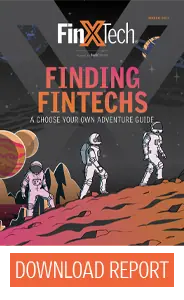
Finding Fintechs: A Choose Your Own Adventure Guide
In my role as editor-in-chief, I attend countless off-the-record conversations with bankers who confess their experiences with financial technology companies. Sometimes, those experiences are anything but good, including a host of empty promises, botched integrations and disillusioned bank staff. It’s like the fintechs took off on the rocket ship but never made it to the moon, after all.
For one, banks and fintechs have a hard time speaking each other’s language. Banks, by nature and necessity, are focused on regulatory compliance. By contrast, technology companies tend to focus on growth, driven by nature and necessity to promise the world to their clients.
That seems to be changing. In the current economy and amid falling valuations for fintechs, many of them are focusing on profitability rather than growth for its own sake. And banks are changing, too. Small community banks, which we’ll define loosely as those below $10 billion in assets, historically have been reluctant to engage directly in partnerships with fintech companies unless those companies are offered by their core processors.
Traditionally, banks’ own policies forbid contracting with young firms that lack several years of audited financial statements, a fact that has excluded the vast majority of early-stage fintechs. But as fintechs mature in terms of compliance with banking regulations and as banks try to incorporate better technology into their systems, there is more room to meet in the middle.
This report is intended as a guide to help more banks take advantage of the offerings of financial technology companies to improve efficiency, customer relationships and to facilitate growth, and to do it in a way that mitigates risk.
First, though, I start with some terminology. Partnership gets batted around an awful lot. But what is it?
The Federal Reserve’s 2021 report, “Community Bank Access to Innovation Through Partnerships,” defines partnerships broadly to include traditional vendor relationships as well as more expansive arrangements that include shared objectives and outcomes, such as revenue sharing. We’ll adopt the Fed’s definition here, for ease of discussion.
In your journey to see what the universe may offer, Godspeed.



